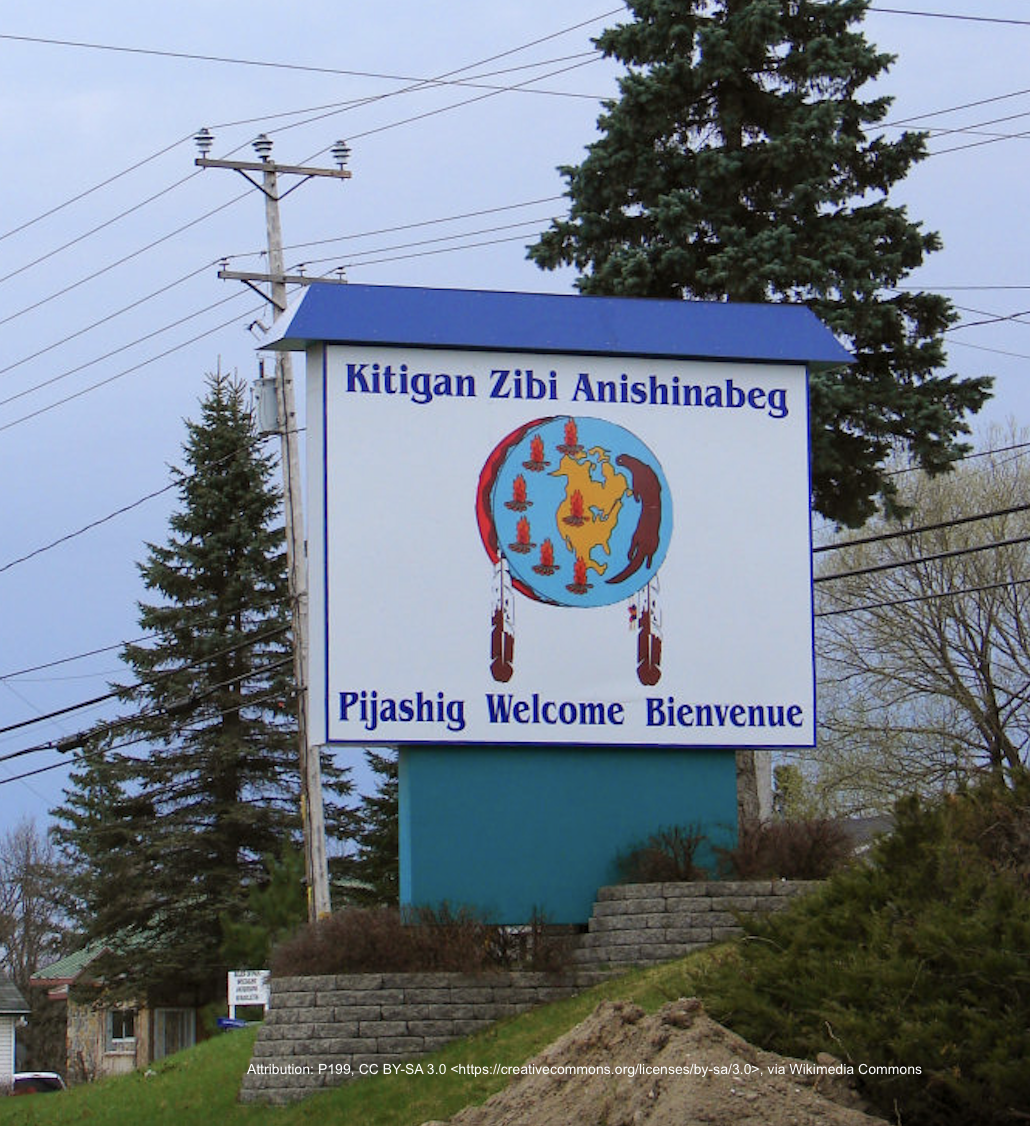Insights from a Rural Rotation in Maniwaki: Bridging Gaps in Indigenous Health
By Samia Benabess
Spotlight Awards: third Place
This article was awarded third place in the inaugural Perspectives on Global Health Spotlight Awards in the category of Indigenous Health
Kitigan Zibi, Algonquin First Nation, Welcome Sign
During my rural rotation in Maniwaki, I witnessed firsthand the challenges Indigenous communities face in accessing healthcare. While the region is rich in cultural heritage and resilience, systemic inequities continue to shape health outcomes. Geographic isolation, limited healthcare infrastructure, and historical injustices contribute to significant disparities, reinforcing the urgent need for equity-driven solutions.
For instance, cancer care presents significant challenges. Patients requiring oncology services often face insurmountable logistical barriers, with the nearest cancer treatment centers located hours away in urban centers. The financial and emotional toll of frequent travel for chemotherapy or radiation therapy disproportionately affects Indigenous patients, who may already experience socioeconomic hardships. Limited access to screening and early detection leads to later-stage diagnoses, reducing survival rates. Programs incorporating Indigenous patient navigators, who help coordinate care and provide cultural support, have shown promise in addressing these barriers. Expanding such initiatives can improve health outcomes and ensure that cancer care is both accessible and culturally responsive. Their work aligns with the recommendations of the Truth and Reconciliation Commission (2015), which emphasize the importance of Indigenous-led healthcare models rooted in cultural understanding and respect.
The disparity in healthcare access between Indigenous communities in the region was particularly striking. Kitigan Zibi, a well-established Algonquin First Nation, has developed a relatively comprehensive healthcare system, offering primary care, mental health services, and wellness programs. In contrast, less than 2 hours away, Rapid Lake, home to the Algonquins of Barriere Lake, struggles with a severe lack of medical infrastructure, poor housing conditions, difficult access to electricity and clean water. The community has faced ongoing challenges in securing sustainable healthcare services, particularly in mental health support, reflecting broader issues of systemic neglect. Patients from both communities would present very differently. The stark contrast between these two communities highlights how resource allocation remains deeply uneven, leaving some populations more vulnerable to health crises than others.
Beyond medical infrastructure, cultural safety remains a fundamental concern. Many Indigenous patients have a deep-rooted mistrust of the healthcare system, stemming from historical traumas such as residential schools and forced assimilation policies. During my time in Maniwaki, I encountered patients who hesitated to seek care due to past experiences of discrimination or cultural insensitivity. This aligns with studies showing that Indigenous patients are less likely to access mainstream healthcare services when culturally safe alternatives are unavailable. To address this, healthcare professionals must engage in meaningful reconciliation efforts, incorporating traditional knowledge systems and Indigenous-led health initiatives to build trust and improve outcomes.
One promising approach is the integration of traditional medicine with Western healthcare. Indigenous Elders and knowledge keepers play a critical role in many communities, offering holistic healing practices that complement biomedical treatments. In Maniwaki, I observed how land-based healing practices such as fasting camps, traditional ceremonies, and plant-based medicine helped patients reconnect with their cultural identity while addressing physical and mental health concerns.
In addition to systemic barriers, social determinants of health, including poverty, housing instability, and food insecurity, exacerbate health disparities. Many Indigenous families in the region struggle with limited access to fresh, nutritious food, contributing to high rates of diabetes and cardiovascular disease. Addressing these health issues requires a broader, intersectoral approach that goes beyond clinical care and includes economic and social policies tailored to Indigenous realities.
This experience reinforced the necessity of Indigenous self-determination in healthcare. Addressing these disparities requires not only increased resources but also a commitment to Indigenous-led solutions that prioritize cultural identity, community engagement, and long-term sustainability. Healthcare policies must be co-developed with Indigenous leaders, ensuring that programs are designed and implemented in ways that reflect the unique needs and strengths of each community.
Moving forward, my time in Maniwaki has left me with a deep appreciation for the resilience of Indigenous communities and a renewed commitment to advocating for equitable healthcare. Systemic change must involve genuine collaboration, where Indigenous voices lead the conversation, and healthcare institutions adapt to support culturally safe, community-driven models of care. Only then can we move toward true reconciliation in healthcare and ensure that all Indigenous communities receive the quality care they deserve.
Samia Benabess a third year medical student passionate about advocacy, research, and mentorship. As a first-generation medical student, she is committed to fostering inclusivity in medicine and is actively involved in projects that support underrepresented communities.

